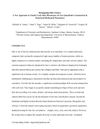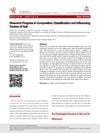Human Scalp Hair: Geometry, Biochemistry, Growth Parameters and Mechanical Characteristics
TLDR A 6-group geometric classification of human scalp hair is more reliable and objective for testing than an 8-group system.
This thesis investigated the reliability of a geometric classification of human scalp hair into 8 groups and its potential improvement, using data from 128 volunteers. The study found that inter-observer agreement was poor for the 8-group classification (k=0.418) but improved for a 6-group classification (k=0.671). Curly hair groups exhibited lower growth rates and tensile strengths, with the straightest hair growing fastest (0.72±0.3 cm/month) and the curliest slowest (0.39±0.2 cm/month). No correlation with biochemistry was detected, although curly hair showed a trend toward higher lipid absorption. A supervised statistical approach using FTIR data improved classification success to 79%, suggesting a more objective method than racial classification for hair testing in medicine and forensic science. The study supported a geometric classification with fewer groups, highlighting correlations between hair geometry, biochemistry, and physical properties.




